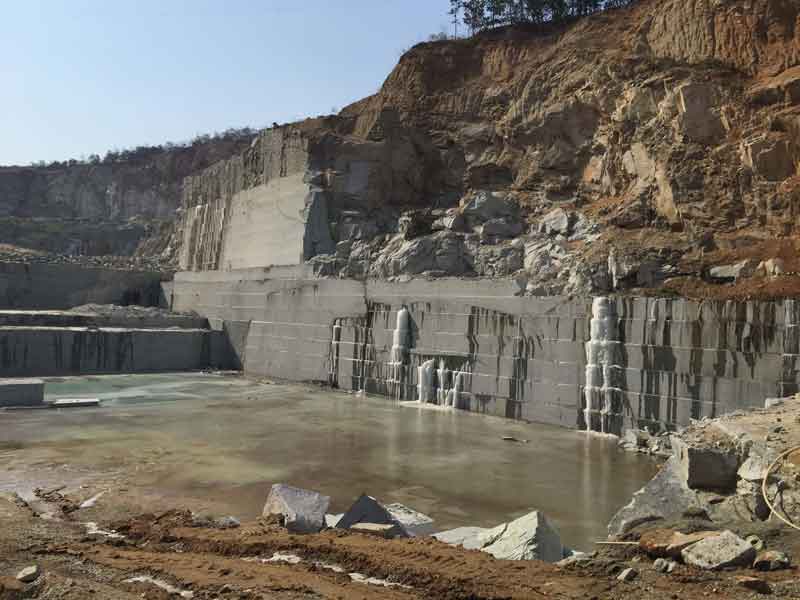Granite Quarries in South Africa Wonders: Exploring the Quarry Landscape
Granite Quarries in South Africa Wonders: Exploring the Quarry Landscape
Blog Article
Uncovering the Rich History and Lasting Practices of Granite Quarrying
As we base on the precipice of uncovering the complex tapestry of granite quarrying, a journey with time discloses not just the physical act of extracting rock but likewise the social and historical relevance woven into the really fabric of this method. From the old origins that laid the foundation for modern quarrying methods to the lasting practices that are forming the future of this industry, each chisel mark on granite surfaces informs a tale waiting to be discovered (granite quarries in south africa). The heritage of granite quarrying stretches far past plain extraction; it is a testimony to human resourcefulness, durability, and the enduring allure of this majestic rock
Old Origins of Granite Quarrying
Dating back to old human beings, the practice of quarrying granite has been an important component of human history and architectural improvement. The earliest proof of granite quarrying go back to ancient Egypt, where large pyramids and intricate sculptures were crafted from this durable stone. The Egyptians utilized primitive tools to extract granite blocks from quarries, showcasing the value of this product in their huge building and constructions.
Progressing in history, the Greeks likewise made considerable payments to the quarrying of granite. The Greeks utilized granite in numerous building wonders, such as holy places and statuaries, showing their ability in shaping and carving this sturdy rock. The Romans better improved the strategies of quarrying granite, using sophisticated tools like chisels and hammers to extract and form granite for their legendary structures.
Through the centuries, the practice of quarrying granite has actually advanced, with modern-day innovations improving effectiveness while preserving the timeless allure of this all-natural stone - granite quarries in south africa. From ancient civilizations to modern contractors, the legacy of granite quarrying proceeds to form our world
Evolution of Quarrying Strategies
The evolution of quarrying strategies has actually been marked by a constant progression towards better performance and accuracy in removing granite. Early quarrying techniques entailed manual labor with fundamental devices such as knives, hammers, and wedges to extract granite blocks from the earth.
Improvements in computer-controlled devices and 3D modeling have actually enhanced quarrying procedures, leading to marginal environmental impact and improved sustainability practices. As the need for granite proceeds to rise, the development of quarrying methods stays essential to meeting industry needs effectively and sustainably.
Cultural Relevance of Granite
Granite holds an extensive cultural value across various civilizations due to its long-lasting presence in architectural masterpieces and prized monoliths. From the impressive pyramids of Egypt to the detailed makings of the Angkor Wat temple in Cambodia, granite has been a product of option for revealing grandeur and long life in social heritage. In ancient Rome, granite columns adorned holy places and public structures, symbolizing toughness and durability. The cultural significance of granite expands beyond its physical characteristics; it embodies strength, security, and timelessness, making it an icon of withstanding legacies and practices.

Lasting Practices in Quarrying
In the middle of the look what i found rich history of granite quarrying and its cultural value exists a growing focus on lasting practices within the industry. As ecological recognition and worries regarding source exhaustion have increased internationally, the quarrying industry has actually progressively embraced lasting methods to minimize its influence on the atmosphere and bordering neighborhoods.

In addition, recovery and rehabilitation of quarry websites post-extraction are important to lasting techniques. By recovering quarried locations to an all-natural or helpful state, such as developing wild animals environments or entertainment areas, quarriers can balance out click for more the environmental footprint of their procedures and add favorably to the neighborhood ecological community.
Tradition of Granite Quarrying
With a historical backdrop soaked in workmanship and commercial progression, what withstanding effect has granite quarrying left on the landscape of modern culture? The legacy of granite quarrying transcends simple removal techniques; it has actually shaped architectural marvels, city landscapes, and cultural heritage worldwide. The durable nature of granite has actually made it a recommended option for monuments, buildings, and framework, standing as a testimony to the skill and virtuosity of quarry workers across generations.
In addition, the financial footprint of granite quarrying can not be forgotten. The market remains to provide employment possibilities and drive regional economies in areas where granite extraction is widespread. It has also stimulated technological advancements in quarrying strategies and equipment, bring about a lot more effective and lasting methods.
In regards to sustainability, the legacy of granite quarrying consists of dig this efforts to minimize environmental effects via reclamation jobs and accountable source monitoring. By balancing economic rate of interests with ecological stewardship, the industry strives to make sure that future generations can continue to take advantage of this long-lasting natural deposit.
Conclusion

Report this page